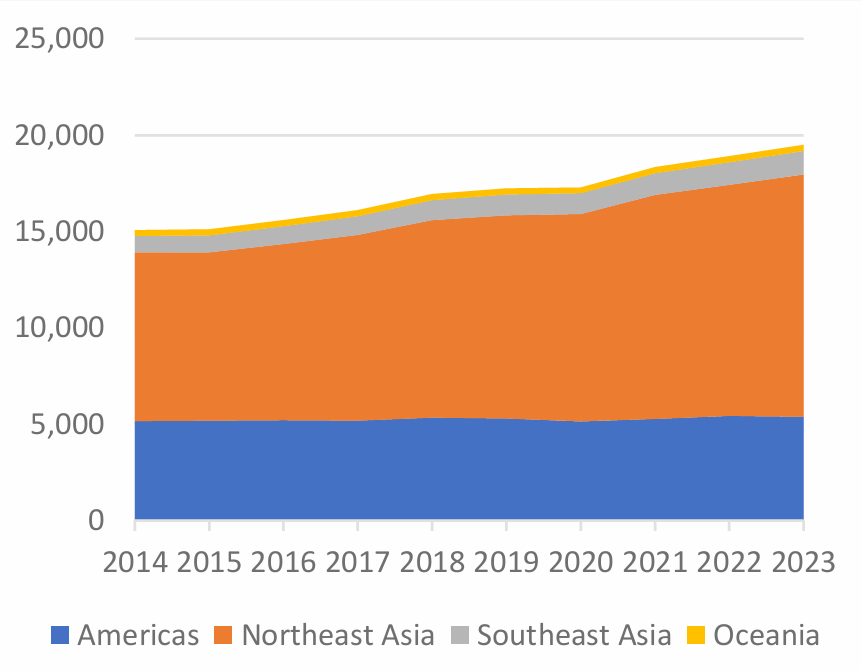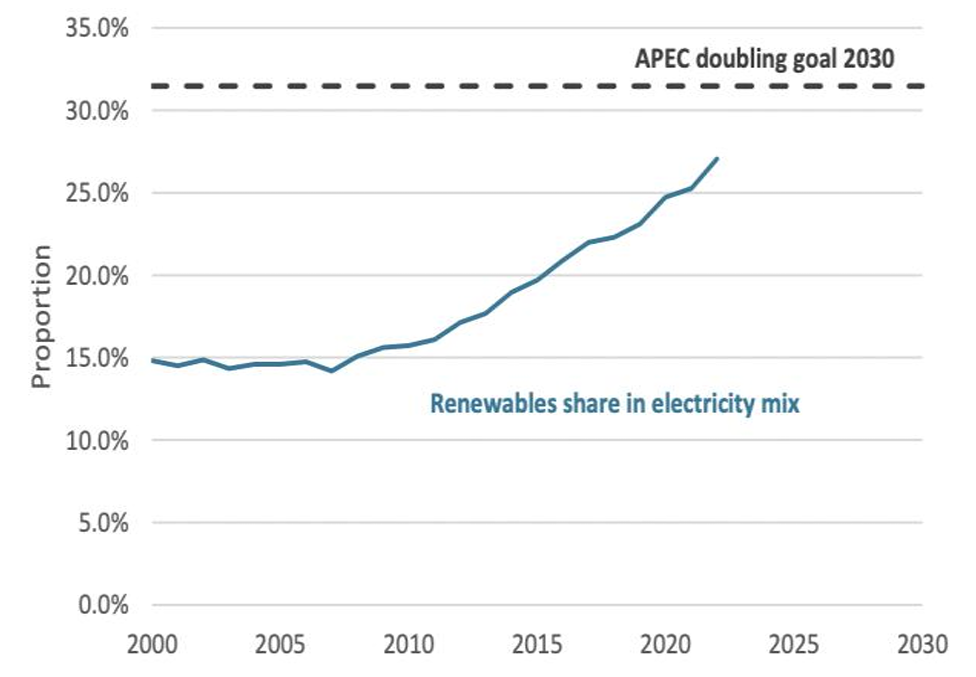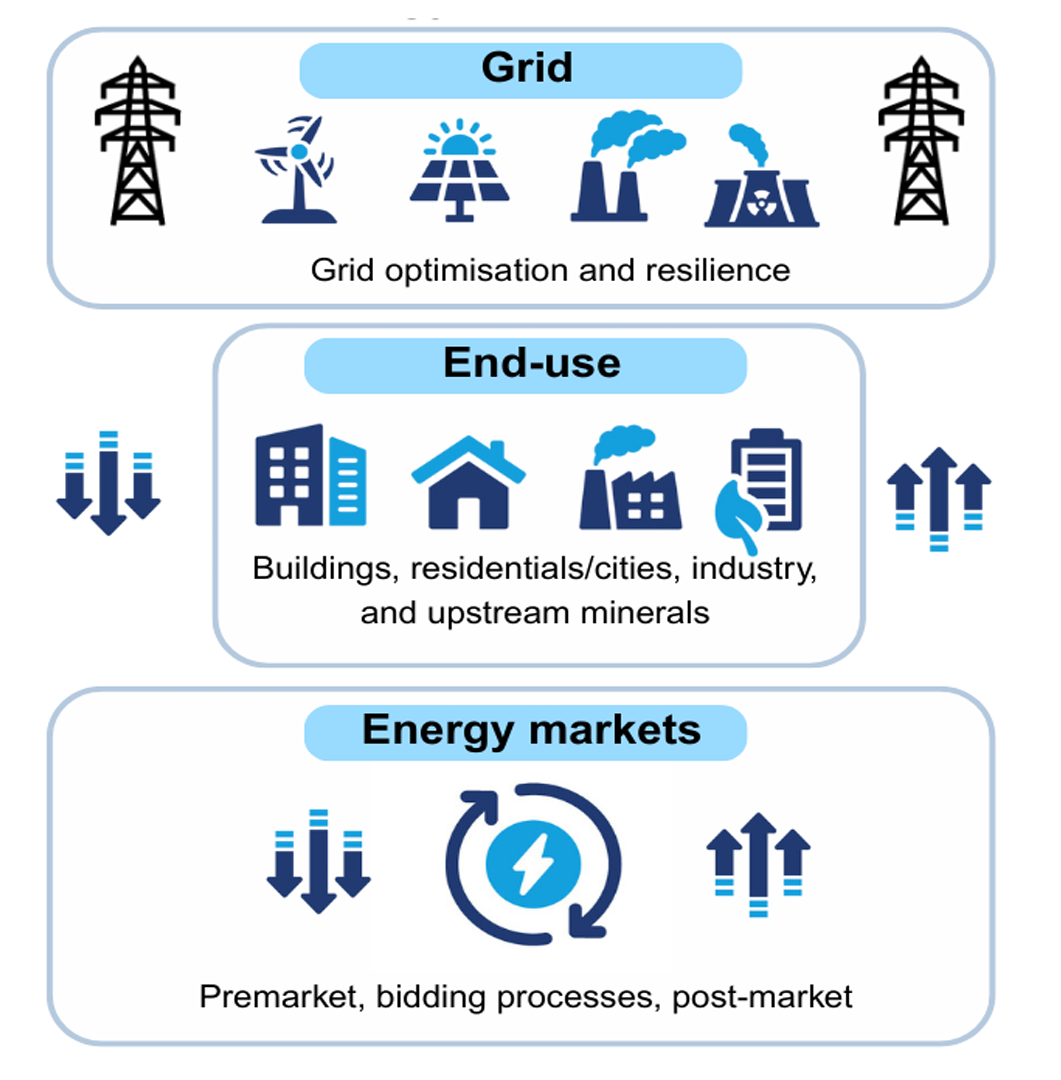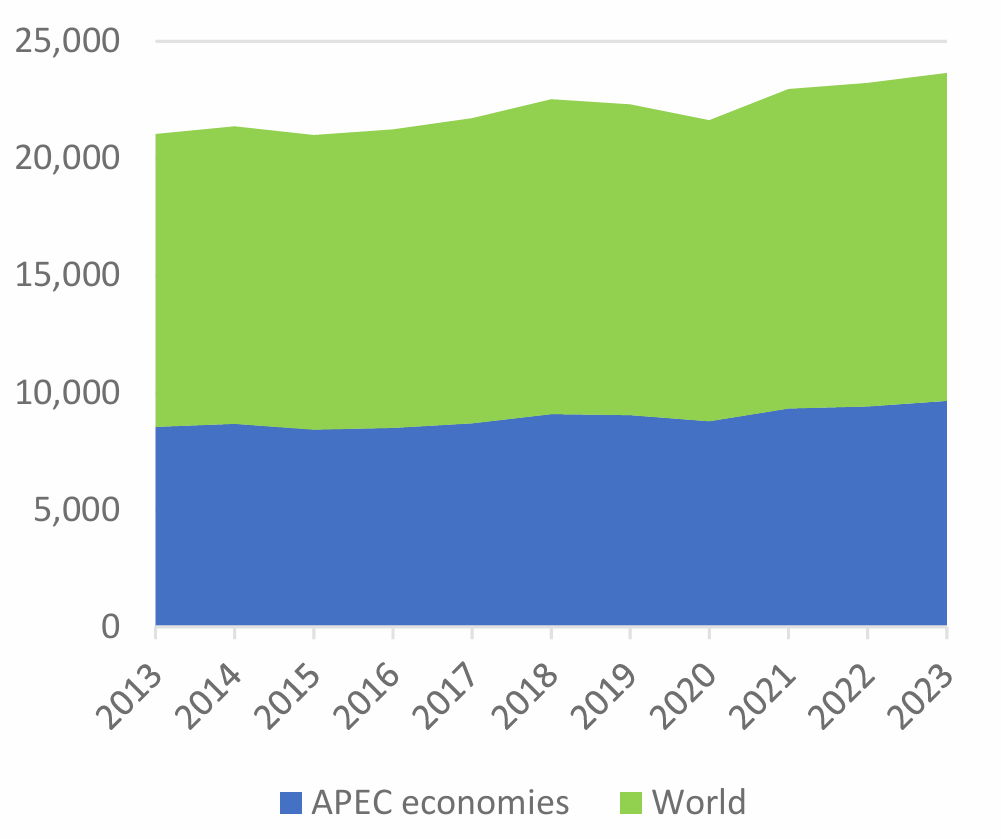KEY MESSAGES
• Artificial intelligence (AI) can be a transformative tool for advancing more resilient, efficient and smarter energy systems. AI can enhance grid forecasting, optimisation and situational awareness while improving demand management. It strengthens energy security by boosting efficiency in energy intensive sectors and supporting the development of secure supply chains. Integrating AI into energy and infrastructure planning and policy can bolster energy reliability, affordability and system flexibility.
• AI must be human-centred, explainable and premised on the goal of providing universal, affordable, clean and reliable power. Responsible AI integration calls for regional capacity building at both technical and decision-making levels. Economies need to ensure that AI tools reflect diverse system realities and avoid ‘techno solutionism’. Coordinated policies through standard setting, innovation funding and cross-sector collaboration can support accessible deployment for all.
• Develop regional governance standards for trustworthy AI. Harmonised AI policy frameworks across APEC will ensure scalability, interoperability and trust. Shared benchmarks for transparency, explainability and accountability are vital to safeguard system reliability and build confidence in AI deployment across critical energy infrastructure. APEC economies could jointly develop regional standards or adopt existing international standards for trustworthy AI in energy to avoid fragmented governance.
• Cooperate on data governance and interoperability. As energy systems become increasingly digital, high-quality, real-time data is foundational. Addressing gaps in data infrastructure, interoperability and cybersecurity could enable scalable AI deployment. A coordinated regional approach to digital governance and open data frameworks may offer significant benefits.
• Start small, learn fast through pilot programs and sandboxes. Economies can initiate regulatory sandboxes and joint pilot programs to safely encourage innovation and experimentation. A progressive approach starting with low-risk AI applications can help build confidence, test solutions in real-world conditions and promote regional knowledge exchange.
• Coordinate on workforce development and capacity building. Given current cross-sectoral skills gaps, economies need to ensure human capacity development across working and policy levels. Enhancing energy-AI literacy can support more informed and context-appropriate applications of AI in complex decision-making environments. Training programs could focus on developing ‘AI translators’ who combine knowledge of AI, energy systems, and policy.
Introduction
APEC economies are navigating a period of rapid transformation in their energy systems. Rising electricity demand (Figure 1), greater system complexity and growing reliance on variable energy sources are reshaping the way energy is generated, managed and consumed across the region. At the same time, increased exposure to extreme weather events and infrastructure constraints are putting pressure on energy reliability, resilience and planning capacity.1
Simultaneously, APEC's collective energy targets to double the share of modern renewables in the energy mix by 2030 (relative to 2010 levels)2 are reshaping energy systems across the region. The increasing integration of renewable energy supply (Figure 2), distributed generation and decentralised storage is making energy supply more variable and complex to manage.

Figure 1. Electricity demand in APEC in terawatt hours (TWh), 2014–2023
Note: Americas = Canada; Chile; Mexico; Peru; and the United States; Northeast Asia = China; Hong Kong, China; Japan; Korea; Russia; and Chinese Taipei; Southeast Asia = Brunei Darussalam; Indonesia; Malaysia; the Philippines; Singapore; Thailand; and Viet Nam; Oceania = Australia; New Zealand; and Papua New Guinea. Source: Data from Ember’s Electricity Data Explorer; APEC Policy Support Unit (PSU) calculations.
Artificial intelligence (AI) presents a timely opportunity to help APEC economies modernise energy systems and enhance operational effectiveness. This policy brief explores how AI can be applied across the energy system value chain (Figure 3). It also identifies key enablers to ensure AI is deployed in a responsible, accessible and effective manner across APEC’s diverse energy systems.
This policy brief leverages insights gathered from interviews with experts and practitioners in the power sector, AI development and policy research as well as published studies on the topic. These insights provide practically grounded and regionally relevant perspectives to guide policy recommendations for APEC economies navigating digital transitions in their energy sectors.

Figure 2. APEC’s modern renewable energy share in the electricity mix, 2000 to 2030
Source: APEC, “APEC Energy Overview 2025” (APEC Secretariat, 2025), https://www.apec.org/publications/2025/07/apec-energy overview-2025

Figure 3. Energy value chain
Note: Grid and end-use cases (e.g., building systems) extend to vertical power systems, while energy markets refer to competitive markets. Source: Authors.
Making the grid more efficient and resilient
Most existing electricity grids are built upon outdated, centralised infrastructure designed for a one-way power flow from large power stations to distant consumers. These systems often lack the ability to share real-time information, which limits the ability of operators to monitor and respond to real-time grid conditions.4
In APEC economies, rising electricity demand is still predominantly met by this conventional, inefficient grid infrastructure,5 which frequently results in supply interruptions (Figure 4) and, notably, contributes to the region’s 68 to 70 percent share of global power sector emissions as of 2023 (Figure 5).

Figure 4. End-use power supply interruptions (hours/year) 2019
Note: (1) Higher values indicate worse performance, i.e., longer and more frequent electricity interruptions. (2) The increase in APEC’s average interruption duration in 2018 and 2019 is primarily due to one economy reporting unusually high interruption values (1,356 hours in 2018 and 940 hours in 2019). Source: System average interruption duration index (SAIDI) from World Bank DataBank’s Doing Business data; APEC PSU calculations.
Incidents of large-scale blackouts in APEC economies6 show how extreme weather events, systemic imbalances and failures in one part of the power grid can rapidly cascade into widespread disruptions. These events jeopardise economic activity, costing as much as USD 1.6 billion in economic impact,7 and compromise public safety. This shows that electric grid efficiency and resilience remain critical priorities for economies, and AI can help meet these challenges (Figure 6).

Figure 5. Power sector emissions from fossil fuels (MtCO2)
MtCO2=megatonnes of carbon dioxide Source: Data from Ember’s Electricity Data Explorer; APEC PSU calculations.
How AI can optimise the grid
Electricity must be consumed the moment it is generated and injected to the grid. If too much electricity is produced, it can overload equipment; if too little, it can trigger blackouts. Though grid-scale storage investment has grown in some economies, storing electricity at scale can be financially and technically burdensome under certain market and regulatory conditions.8 AI can help balance supply and demand in real time, making the grid more efficient, adaptive and reliable at lower cost.
Forecasting and planning
AI uses large amounts of data to predict electricity demand and supply faster and more accurately than traditional methods.9 These forecasts help system operators make better decisions, reduce waste and avoid curtailing use of clean energy.10
One example is optimal power flow (OPF), a model that is used to find the best way to deliver electricity across the grid. AI can solve OPF problems faster, which is especially important in energy systems with high shares of renewable energy like wind and solar that can make the grid less stable and more challenging to manage in real time.11 Faster solutions mean improved real-time situational awareness and help system operators and planners maintain grid stability.

Figure 6. AI applications in the grid system
AI=artificial intelligence; EV=electric vehicle Source: Authors.
Infrastructure optimisation
AI helps make better use of the grid infrastructure and can unlock additional transmission capacity using existing power lines.
One example is the use of AI in dynamic line rating (DLR) – a process for regulating power line capacity based on weather conditions – as a low-risk, ready-to deploy tool for grid optimisation.12 DLR can use AI for real-time monitoring and enable more electricity flows through the system when physical conditions allow.
According to the International Energy Agency (IEA), AI could unlock up to 175 gigawatts of additional transmission capacity worldwide without the need for new transmission lines.13 This additional capacity is especially crucial in developing economies where rising power flows due to growing demand can result in costly bottlenecks in the grid system.
Smart coordination and control The grid system and its operators are increasingly required to manage decentralised electricity production, weather-related volatility and complex grid flows.14
AI enables real-time control and coordination across the grid. It can automatically adjust how much electricity is produced or consumed based on inputs like prices, weather and grid conditions.15 This improves coordination between big utilities and smaller players such as households with rooftop solar panels.
In wind farms, AI-enabled wake steering (adjusting turbine angles to minimise turbulence) can improve energy output and density by an average of 22 percent,16 enhancing efficiency without adding new turbines. Separately, trials across 700 megawatts of wind generation in the US show machine learning (ML) boosting wind energy value by 20 percent.17
Click to read more